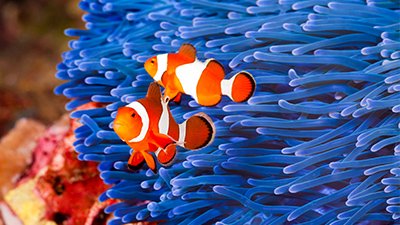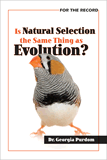Salmon: Rapid Evolution
Salmon said to have evolved rapidly.
News Source
Migratory cycles are often timed so as to take maximum advantage of seasonal conditions. In the case of Pacific pink salmon, the migratory spawning pattern is closely associated with water temperature. Over the past several decades, these fish have started migrating about two weeks earlier. But has this change been associated with any genetic changes? Results of a long-term study indicate it has.
Organisms must of course adapt in order to thrive in changing conditions over time. Often this adaptation to environmental pressures is accomplished without genetic alterations. Such adaptation is called phenotypic plasticity. Population ecologist Ryan Kovach, who led this investigation, describes the difficulty in documenting actual genetic alterations associated with adaptations. He says, “It has been extremely difficult to determine whether any of the multitudes of observed phenological [cyclic or seasonal phenomena] changes in nature are due to rapid microevolution within a population. This study is the first empirical example using genetic data to confirm this theory, and so addresses a key research gap that has been acting as a thorn in the side of the field.”
The researchers assessed changes in salmon population genomes by following the prevalence of a genetic marker bred into late-migrating salmon in the 1980s.
The researchers assessed changes in salmon population genomes by following the prevalence of a genetic marker bred into late-migrating salmon in the 1980s. The marker itself was unaffected by natural selection. By examining genomes from 17 generations of fish over 32 years, the researchers concluded that the population’s genetic makeup actually did change. The late-migrating fish genome did decrease within the population as the early-migrating fish genome increased. The population remained stable. Therefore, even though any advantage to earlier migration is unknown, it appears the population did not suffer from the one-degree increase in overall water temperature and did respond to the change by an actual genetic alteration.
The researchers term this change microevolution. They do not of course claim salmon changed into non-fish or even a non-salmon. Such variation within created kinds of organisms is observable in nature and may be influenced by natural selection as well as other factors (genetic drift, founder effects, etc.). Creation scientists do not disagree that such change occurs and is even a way in which speciation sometimes occurs.
Implicit in the term microevolution, however, is the idea that the sorts of change observed in these salmon could eventually add up to produce non-fish, given enough time. As creation scientists, therefore, we tend to avoid the use of the term microevolution because evolutionists often say that macroevolution—the supposed evolution of one kind of organism into another—is just “microevolution writ large.” In other words, they tend to use the observable and often rapid occurrence of genetic changes and variation within created kinds of organisms as evidence that new genetic information can be acquired to enable evolution of new kinds of organisms. As Karl Giberson and Frances Collins have written, echoing this evolutionary thought, “Macroevolution is simply microevolution writ large: add up enough small changes and we get a large change.”1
Macroevolution, however, has not been observed. Mutations may certainly contribute to genetic variation, but they represent a loss of information, not an acquisition of new genetic information. And since the reshuffling of existing genetic information and its mutations does not provide the information to evolve new organisms, it is not logical to use observable microevolution as evidence for the occurrence of unobservable macroevolution. Such a “proof” is analogous to the rather foolish sentiment associated with expecting to profit by selling all products at a loss but making up for losses in volume.
God created all kinds of creatures, including fish, about 6,000 years ago to reproduce after their kinds. The adaptive abilities of such creatures may depend on non-genetic or genetic means. It is interesting to see such an example of adaptability in these salmon. We look forward to further studies elucidating how environmental temperature exerts its influence on these fish that seem eminently equipped to adapt to warmer waters.
Further Reading
- Natural Selection vs. Evolution
- Is Natural Selection the Same Thing as Evolution?
- Toward an Accurate Model of Variation in DNA
- Flies with Lice
- Evidence For Continuing Human Evolution Arguably Irrelevant
- Ultrafast Parasite Evolution
- Peppered Moth Again
For More Information: Get Answers
Remember, if you see a news story that might merit some attention, let us know about it! (Note: if the story originates from the Associated Press, FOX News, MSNBC, the New York Times, or another major national media outlet, we will most likely have already heard about it.) And thanks to all of our readers who have submitted great news tips to us. If you didn’t catch all the latest News to Know, why not take a look to see what you’ve missed?
(Please note that links will take you directly to the source. Answers in Genesis is not responsible for content on the websites to which we refer. For more information, please see our Privacy Policy.)
Footnotes
- K. Giberson and F. Collins, The Language of Science and Faith: Straight Answers to Genuine Questions (Downers Grove, Illinois: InterVarsity Press, 2011), p. 45.
Recommended Resources

Answers in Genesis is an apologetics ministry, dedicated to helping Christians defend their faith and proclaim the good news of Jesus Christ.
- Customer Service 800.778.3390
- Available Monday–Friday | 9 AM–5 PM ET
- © 2025 Answers in Genesis





